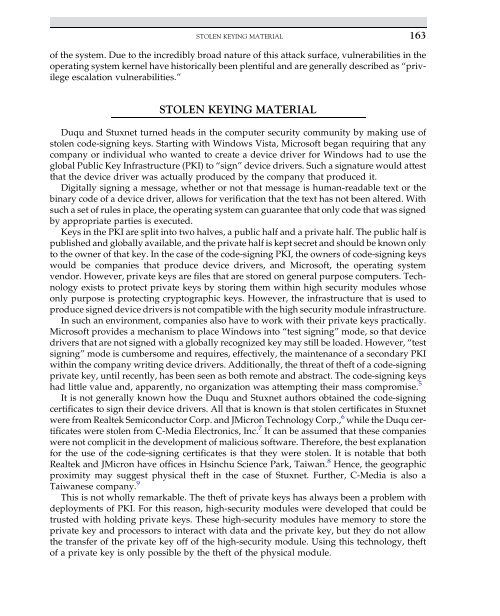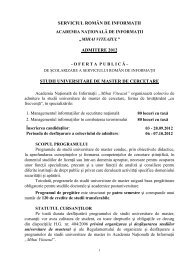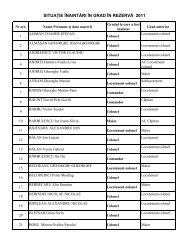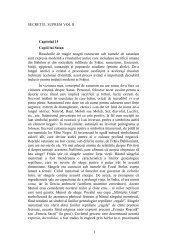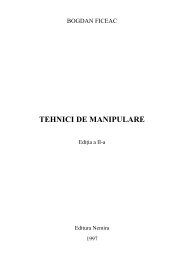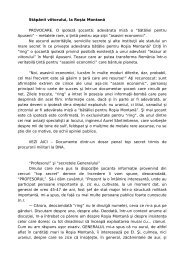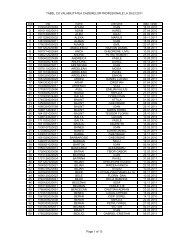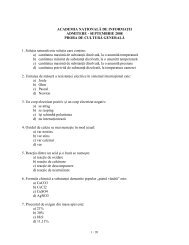Introduction to Cyber-Warfare - Proiect SEMPER FIDELIS
Introduction to Cyber-Warfare - Proiect SEMPER FIDELIS
Introduction to Cyber-Warfare - Proiect SEMPER FIDELIS
Create successful ePaper yourself
Turn your PDF publications into a flip-book with our unique Google optimized e-Paper software.
STOLEN KEYING MATERIAL163of the system. Due <strong>to</strong> the incredibly broad nature of this attack surface, vulnerabilities in theoperating system kernel have his<strong>to</strong>rically been plentiful and are generally described as “privilegeescalation vulnerabilities.”STOLEN KEYING MATERIALDuqu and Stuxnet turned heads in the computer security community by making use ofs<strong>to</strong>len code-signing keys. Starting with Windows Vista, Microsoft began requiring that anycompany or individual who wanted <strong>to</strong> create a device driver for Windows had <strong>to</strong> use theglobal Public Key Infrastructure (PKI) <strong>to</strong> “sign” device drivers. Such a signature would attestthat the device driver was actually produced by the company that produced it.Digitally signing a message, whether or not that message is human-readable text or thebinary code of a device driver, allows for verification that the text has not been altered. Withsuch a set of rules in place, the operating system can guarantee that only code that was signedby appropriate parties is executed.Keys in the PKI are split in<strong>to</strong> two halves, a public half and a private half. The public half ispublished and globally available, and the private half is kept secret and should be known only<strong>to</strong> the owner of that key. In the case of the code-signing PKI, the owners of code-signing keyswould be companies that produce device drivers, and Microsoft, the operating systemvendor. However, private keys are files that are s<strong>to</strong>red on general purpose computers. Technologyexists <strong>to</strong> protect private keys by s<strong>to</strong>ring them within high security modules whoseonly purpose is protecting cryp<strong>to</strong>graphic keys. However, the infrastructure that is used <strong>to</strong>produce signed device drivers is not compatible with the high security module infrastructure.In such an environment, companies also have <strong>to</strong> work with their private keys practically.Microsoft provides a mechanism <strong>to</strong> place Windows in<strong>to</strong> “test signing” mode, so that devicedrivers that are not signed with a globally recognized key may still be loaded. However, “testsigning” mode is cumbersome and requires, effectively, the maintenance of a secondary PKIwithin the company writing device drivers. Additionally, the threat of theft of a code-signingprivate key, until recently, has been seen as both remote and abstract. The code-signing keyshad little value and, apparently, no organization was attempting their mass compromise. 5It is not generally known how the Duqu and Stuxnet authors obtained the code-signingcertificates <strong>to</strong> sign their device drivers. All that is known is that s<strong>to</strong>len certificates in Stuxnetwere from Realtek Semiconduc<strong>to</strong>r Corp. and JMicron Technology Corp., 6 while the Duqu certificateswere s<strong>to</strong>len from C-Media Electronics, Inc. 7 It can be assumed that these companieswere not complicit in the development of malicious software. Therefore, the best explanationfor the use of the code-signing certificates is that they were s<strong>to</strong>len. It is notable that bothRealtek and JMicron have offices in Hsinchu Science Park, Taiwan. 8 Hence, the geographicproximity may suggest physical theft in the case of Stuxnet. Further, C-Media is also aTaiwanese company. 9This is not wholly remarkable. The theft of private keys has always been a problem withdeployments of PKI. For this reason, high-security modules were developed that could betrusted with holding private keys. These high-security modules have memory <strong>to</strong> s<strong>to</strong>re theprivate key and processors <strong>to</strong> interact with data and the private key, but they do not allowthe transfer of the private key off of the high-security module. Using this technology, thef<strong>to</strong>f a private key is only possible by the theft of the physical module.


